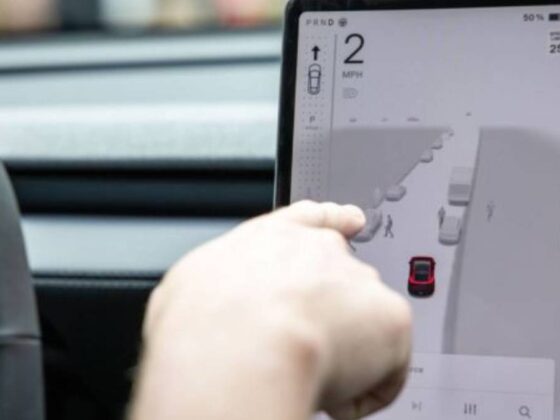Experience Level Objectives (XLOs) represent a fundamental evolution in monitoring philosophy, moving beyond the conventional Service Level Objectives (SLOs) and SLAs that have dominated IT operations for years.
This post examines the key differences between these approaches and explains why XLOs provide a more business-aligned framework for modern digital operations.
User-Centric vs. infrastructure-centric measurements
Traditional SLA and SLO monitoring has primarily focused on system availability and IT infrastructure health. This approach centers on technical metrics like uptime percentages, server response times, and infrastructure resource utilization. While these metrics provide valuable insights into system health, they create a significant disconnect between technical indicators and actual business metrics.
In contrast, XLO monitoring prioritizes metrics that directly gauge user experience and satisfaction. This shift reflects a growing recognition that digital service quality cannot be measured solely by whether systems are functioning, but rather by how well they are functioning from the user's perspective. As research increasingly shows, “slow is the new down”—acknowledging that poor performance, even without complete failure, can severely impact user satisfaction and business outcomes.
This philosophical difference addresses a critical blind spot in traditional monitoring approaches. A system can report 100% uptime while delivering a frustratingly slow experience that drives users away. XLOs close this gap by measuring what actually matters to users: the quality and speed of their interactions with digital services.
The importance of monitoring from where it matters
Most monitoring tools rely on cloud-based vantage points for digital experience monitoring —convenient (for the vendor), but disconnected from the actual user experience. These first-mile checks confirm whether the infrastructure is up, but say little about how your application is experienced by users in the real world. Hence, it is primarily useful for QA purposes, especially for new code releases.
XLOs shift the perspective. They depend on insights captured from where users truly are—whether that’s on a connection inside an office through a regional ISP, a mobile connections through a mobile operator, or even a laptop connected via Starlink. This visibility uncovers the real issues users face: congestion, routing delays, delays from third part code, and other last-mile failures that cloud monitoring can’t see.
If SLOs tell you your system is available, XLOs tell you whether it’s delivering the experience the business expects to real users. This outside-in view is what turns data into real business insight. It closes the visibility gap between infrastructure health and user experience—and that’s where the real value lies.
End-to-End Journey Perspective
Traditional SLOs often focus on individual components or services, creating a fragmented view of performance. XLOs, by contrast, are designed to capture the complete user journey across multiple systems and services. This end-to-end perspective reflects the reality that users experience services holistically, not as isolated components. Modern digital services span multiple providers, platforms, and technologies, making isolated component monitoring inadequate for ensuring overall service quality.
While an SLA may measure the uptime of an S3 storage bucket, or the uptime of your DNS or CDN provider, these are only three of dozens or hundreds of components in an entire system. As a rule of thumb, the quality of the experience delivered by a system is as good as the worst of its components. Thus, while most components could be working perfectly, an issue in a third-party API may be resulting in the entire experience for your users to be unacceptable.
The XLO, by contrast, is less concerned about CPU utilization or database response time, while entirely focused in the resulting experience for a user – whether the user is a customer, an internal user, or an API consumed by an internal or external system.
Business alignment and value demonstration
A critical difference between XLOs and traditional SLOs is their alignment with business outcomes. Traditional SLOs primarily serve technical teams, measuring system health in terms that may not translate directly to business impact, while SLAs establish accountability from vendors that deliver a component of the functionality of a system. This creates challenges in demonstrating IT's value to business stakeholders and securing resources for performance improvements.
XLOs fundamentally change this dynamic by providing metrics that directly correlate with business performance. By moving beyond “Is it up?” to answer “Is it meeting our users’ expectations?”, XLOs address what business stakeholders actually care about. This alignment helps prove the value of IT Operations and justify investments in performance improvements by demonstrating clear connections between technical performance and business outcomes.
As more components of our business and personal lives are based on digital experiences or supported by digital processes, delivering on the expectations is a business priority. In a recent survey of thousands of users showed bad digital experiences are the main reason why consumers switch to different banking providers.
As a specific example, a team can set specific XLO targets that reflect business priorities, such as ensuring the critical part of loading a page, measured as Largest Contentful Paint (LCP), does not exceed 2.5 seconds 90% of the time in a given month. This specific threshold directly impacts bounce rates and user engagement, providing clear business value.
Accelerating maturity with XLOs
According to the GigaOm Maturity Model for IPM, organizations progress through five stages—from chaotic, reactive operations to optimized, business-driven monitoring. Traditional SLOs keep teams stuck in the early stages, focused on infrastructure uptime and siloed metrics. XLOs act as a catalyst for maturity by:
Aligning with advanced stages: XLOs introduce user-focused metrics that resonate with the ‘Quantitative' and ‘Optimized' stages, emphasizing business outcomes.
Facilitating proactive issue detection: Tools like burndown charts enable early identification of performance degradations, a hallmark of mature operations.
Fostering cross-functional collaboration: XLOs unify teams around shared objectives, essential for achieving higher maturity levels.
For example, a retail company using XLOs to monitor checkout flow performance (e.g., Time to Interactive across regions) isn’t just fixing errors—they’re optimizing a revenue-critical journey, a hallmark of GigaOm’s value-based observability.
Proactive vs. Reactive Monitoring
Traditional SLO monitoring often creates a reactive posture, where teams respond to issues after they've already impacted users. This approach typically waits for error thresholds to trigger alerts before teams mobilize to address problems. Once these thresholds are crossed, the business is already suffering some impact.
XLO monitoring enables a substantially more proactive approach. By tracking performance trends over time, proactively simulating user experiences from their real-world locations, businesses can detect gradual degradations before they breach critical thresholds – and often before they impact users.
Tracking XLOs over time is where burn-down charts come into play. Burn down charts help track the progress of your performance against your set objectives, showing how much of your performance budget is left as time goes on.
When a team adopts XLOs as a KPI, it influences how the teams make decisions, how they see success, and what risks are acceptable. Operations can evaluate whether to release changes based on their projected impact on experience metrics, maintaining consistently high user satisfaction. In this way, burn down charts offer a clear status of service health over periods of time.
Breaking down organizational silos
A significant practical difference between XLO and traditional SLO approaches lies in their organizational impact. Traditional SLOs often reinforce existing silos between development, operations, and business teams, as each group focuses on their own specialized metrics.
XLOs, by contrast, create a common language and shared objectives across organizational boundaries. By providing metrics that matter to both technical and business stakeholders, XLOs facilitate cross-functional collaboration and shared accountability for user experience. This collaborative approach enables faster problem resolution and more effective performance optimization.
Building a digital operations center (DOC)
For a long time, IT operations teams have built NOCs and SOCs to manage network operations and security. In today’s world where most business interactions are digital, as organizations mature, many are formalizing their cross-functional efforts by building Digital Operations Centers (DOCs).
A DOC brings together teams across IT, engineering, and business functions to monitor experience-centric metrics in real time. With XLOs at the core, a DOC isn’t just a control room—it’s a shared space for aligning around user outcomes, accelerating response times, and making performance a business-wide priority. It’s a sign of maturity and a strategic investment in digital resilience.
A DOC puts digital user experience at the center of the business and provides visibility into how every critical digital operation in the business performs – and what is the performance of all the key components that contribute to delivering that experience – from internet backbone to third party components, cloud services, APIs, DNS, front-end servers, databases, microservices, down to application code.
A DOC is a natural evolution of a NOC and a SOC as IT operations teams evolve from a systems-uptime focus to becoming a true operational intelligence team that is a critical component of how the business operates, and not only the team keeping the lights on.
Specific Experience Metrics
XLO monitoring to measure specific performance metrics that directly impact user experience can include:
Wait Time: The duration between the user’s request and the server’s initial response
Response Time: The total time taken for the server to process a request and send back the complete response
First Contentful Paint (FCP): The time it takes for the browser to render the first piece of content on the screen
Largest Contentful Paint (LCP): Time when the largest content is visible within the browser
Cumulative Layout Shift (CLS): A measure of how much the layout of the page shifts unexpectedly during loading
Time to Interactive: The time it takes for a page to become fully interactive and responsive to user inputs
These metrics create a multidimensional view of the user experience that traditional infrastructure-focused SLOs simply cannot provide.
The Strategic Value of XLO Monitoring
SLOs and Experience Level Objectives (XLOs) aren’t just buzzwords; they're guiding principles for ensuring performance indicators align with real customer expectations.
The SRE Report 2025
According to the SRE Report 2025, 40% of businesses are prioritizing the adoption of SLOs and XLOs over the next 12 months. By focusing on user experience rather than just system availability, providing specific experience-focused metrics, aligning with business outcomes, enabling proactive optimization, capturing end-to-end journeys, and breaking down organizational silos, XLOs provide a more comprehensive and business-relevant approach to monitoring.
This evolution reflects changing expectations from both users and businesses.
For organizations seeking to improve digital experience quality while demonstrating clear business value from IT investments, XLOs offer a powerful framework that goes beyond traditional SLO limitations. By implementing XLO monitoring, organizations can align technical performance with business objectives, ultimately delivering superior digital experiences that drive competitive advantage.
We've listed the best Active directory documentation tool.
This article was produced as part of TechRadarPro's Expert Insights channel where we feature the best and brightest minds in the technology industry today. The views expressed here are those of the author and are not necessarily those of TechRadarPro or Future plc. If you are interested in contributing find out more here: https://www.techradar.com/news/submit-your-story-to-techradar-pro












